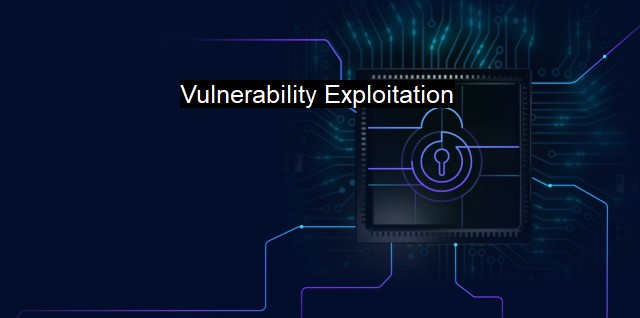What is Vulnerability Exploitation?
Vulnerability Exploitation in Cybersecurity: Understanding the Method and Its Relationship with Antivirus Protection in the Digital Age
Vulnerability Exploitation refers to the practice of identifying and taking advantage of weaknesses or vulnerabilities in a system, principally in the domain of cybersecurity. These vulnerabilities can be within software, hardware, or even among human resources. Eventually, everything related to protecting a system can have vulnerabilities, and exploiting these is what cybercriminals do to gain unauthorized access. Exploiting a system may include stealing data, installing malware, launching a denial of service (DoS) attack or using the system for criminal activities.In the broad sphere of cybersecurity, vulnerability exploitation is at the center of many malicious activities, being a commonly adopted method by hackers. In this context, the vulnerabilities are the design, configuration, implementation or operational weaknesses in the different components of a system. Once a vulnerability has been recognized, it provides an opening through which a system can be compromised. The assessment of such an opening is known as vulnerability assessment.
Hardly a day goes by without new software vulnerabilities being discovered. Operating systems, applications programs, Internet of Things devices - anywhere there is software running, there is the possibility for a weakness that can be exploited. Cybercriminals relentlessly hunt for these vulnerabilities, and when they find them, they engineer tools and techniques to leverage the vulnerability to gain control of systems and data damage.
Antivirus applications play a significant role in guarding against vulnerability exploits. They shield the systems from unauthorized access attempts by preventing, detecting, and removing malicious software, often acknowledged as malware. Without question, one of the most critical facets of an antivirus application is its capacity to detect the most recent malware. for the detection to be efficient, the antivirus software must be regularly updated to handle any novel vulnerability exploits.
Another noteworthy anti-virus strategy is heuristics. Unlike traditional signature-based detection methods, heuristic algorithms identify harmful behavior by analyzing the code before it executes and assessing whether it behaves like malware. This perceived behavior could be exploitation of a recognized vulnerability in an operating system or application.
In the face of the growing threat of cyber-attacks through vulnerability exploitation, Patch Management also becomes vital. It refers to the process of updating software with new pieces of code to upgrade, fix or improve it, providing ‘patches' to the vulnerabilities, hence preventing exploitation. Security patches are of extraordinary importance since they rectify vulnerabilities in software that, if left unaddressed, could afford hackers easy system penetration. Therefore, the application of patches in a timely manner is a critical security measure.
It's also crucial to mention the famous zero-day attacks. A zero-day vulnerability represents a distinct case because it's a software vulnerability that the software vendor itself is not aware of. That implies that there are zero days within which to fix the issue before the exploit takes place. This type of exploit can be incredibly tricky to counter, as it exploits unknown vulnerabilities. Rapid discovery of these exploits and patch implementation is often critical to mitigate damage.
The cyber threat landscape, especially vulnerability exploitation, delivers increasing challenges to businesses and individuals worldwide. Coupled with evolving advancements in technology and the amplification of the digital battlefield, vulnerabilities present in systems will persistently offer fruitful gateways to these adversaries. As such, it is paramount that businesses and individuals appreciate the value of comprehensive vulnerability management strategies–including employing the right antivirus software, regular software updates, patching known vulnerabilities and ongoing staff security awareness training– in order to mitigate the risks from an increasingly diverse range of digital threats.
While maintaining a hawk-eyed vigilance, focusing on vulnerability exploitation countermeasures, and ensuring software is kept up-to-date and protected will decrease the likelihood of exploits causing harm, it's critical to remember cyber attack prevention is a constant battle requiring active participation and awareness from all sides. Coordination across technology, processes, and people is necessary to thwart vulnerability exploitation attempts. It is a remarkable fact that the steps taken to prevent exploitation are fundamental to ensure the security of the cyber world.

Vulnerability Exploitation FAQs
What is vulnerability exploitation in cybersecurity context?
Vulnerability exploitation is the practice of taking advantage of a security weakness or vulnerability in a computer system or network to gain unauthorized access, execute malicious code or cause harm to the system.What is the purpose of vulnerability exploitation?
The purpose of vulnerability exploitation is to exploit the security weaknesses in a system or network to gain unauthorized access, execute malicious code, or cause harm.What is the role of antivirus in preventing vulnerability exploitation?
Antivirus software helps prevent vulnerability exploitation by actively scanning for and detecting known vulnerabilities and malicious code. The software can also detect and block suspicious activities that may indicate an attempted exploit.What should I do if I suspect vulnerability exploitation on my system or network?
If you suspect vulnerability exploitation on your system or network, immediately disconnect from the internet and contact your IT security team. It's important to investigate the source of the suspected exploit and take steps to patch or mitigate the vulnerability to prevent further damage.| | A | | | B | | | C | | | D | | | E | | | F | | | G | | | H | | | I | | | J | | | K | | | L | | | M | |
| | N | | | O | | | P | | | Q | | | R | | | S | | | T | | | U | | | V | | | W | | | X | | | Y | | | Z | |
| | 1 | | | 2 | | | 3 | | | 4 | | | 7 | | | 8 | | |||||||